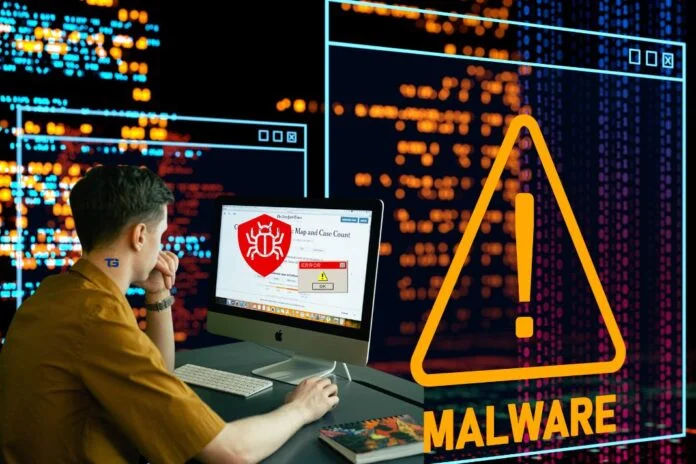In the fast-evolving world of technology and digital systems, encountering a bug or error in software systems is inevitable. One such peculiar and increasingly reported issue is the Huzoxhu4.f6q5-3d bug. While the name may sound like a randomly generated code or internal identifier, it has caught the attention of developers, gamers, IT professionals, and even end-users who are facing issues in performance, stability, or accessibility of their systems due to this bug.
This article provides a comprehensive guide on what the Huzoxhu4.f6q5-3d bug is, the common causes behind it, and the best step-by-step solutions to fix and prevent it.
What Is the Huzoxhu4.f6q5-3d Bug?
The Huzoxhu4.f6q5-3d bug appears to be a unique identifier tied to a critical malfunction in software or device firmware. This bug can result in:
- Application crashes
- Data loss or corruption
- System slowdowns
- Failure to load or execute certain features
- Unexpected shutdowns or freezing
While this bug’s nature may vary based on the system it’s affecting (Windows, Linux, gaming consoles, or embedded systems), the structure of the error code suggests that it might relate to memory allocation, corrupted files, or a compatibility issue.
Common Symptoms of the Huzoxhu4.f6q5-3d Bug
Before diving into the solution, it’s important to identify the bug’s presence. Some of the most common symptoms include:
- System log error entries that reference
huzoxhu4.f6q5-3d - Lag or freezing while running specific applications or processes
- Random reboots or crashes that occur under heavy workloads
- Driver or firmware errors pointing to 3D-rendering or hardware acceleration failures
- Missing files or broken links in core system or software packages
If you’ve encountered any of these symptoms, then it’s likely the Huzoxhu4.f6q5-3d bug is affecting your system.
Top Causes Behind the Bug
To effectively fix the bug, it helps to understand what causes it. The following are the most common reasons for the Huzoxhu4.f6q5-3d error:
1. Software Update Conflicts
If a recent update was incompatible with your hardware or other software, it could have triggered the bug.
2. Corrupted System Files
The bug might originate from missing or corrupted system files required for proper functioning of the app or OS.
3. Graphics Driver Malfunction
The “3d” in the code often suggests that a problem lies in 3D rendering or GPU-related operations, possibly due to a faulty driver.
4. Memory Management Errors
If the program tries to access restricted memory space or overflows a buffer, this bug might show up as a result.
5. Malware Infection
Although rare, malware may impersonate or mask itself as such bugs to mislead detection tools.
Step-by-Step Guide to Fix Huzoxhu4.f6q5-3d Bug
Here are actionable steps to resolve the bug from both software and hardware perspectives.
Step 1: Run a System Scan
Start with the basics:
- On Windows, open Command Prompt (Admin) and run: bashCopyEdit
sfc /scannow - This will detect and fix corrupted system files automatically.
- Follow it up with: swiftCopyEdit
DISM /Online /Cleanup-Image /RestoreHealth
Step 2: Update or Reinstall Drivers
If the bug relates to 3D rendering or graphics:

- Go to Device Manager > Display Adapters
- Right-click your GPU (e.g., NVIDIA, AMD, Intel) and select Update Driver
- Or visit the official website of your GPU manufacturer to download the latest drivers manually.
- In extreme cases, uninstall the driver using Display Driver Uninstaller (DDU) and reinstall it cleanly.
Step 3: Roll Back Recent Software Updates
If the error began after a recent update:
- Navigate to Settings > Update & Security > Windows Update > View Update History
- Select Uninstall Updates and remove the last update that may have caused instability.
For Linux-based systems:
- Use your distro’s package manager (like
apt,yum, ordnf) to roll back or lock package versions.
Step 4: Check for Malware or Intrusion
Use a reliable tool such as:
- Malwarebytes
- Windows Defender Offline Scan
- Kaspersky Rescue Disk
Scan the system in safe mode to ensure deeper analysis.
Step 5: Perform a Clean Boot
To isolate whether third-party services are interfering:
- Open System Configuration (msconfig)
- Under Services, check Hide Microsoft services, then disable all.
- Under Startup, disable unnecessary apps.
- Reboot and check if the bug persists.
Step 6: Test Hardware Components
If none of the above helps, you might be facing a hardware-related issue:
- Run memory tests using
memtest86 - Run GPU stress tests using tools like
FurMarkorHeaven Benchmark - Check system temperatures using HWMonitor or similar
Replace any failing component to avoid future issues.
Preventive Measures
To keep the bug from returning:
- Keep drivers and OS up to date, but avoid beta versions unless necessary.
- Backup your data regularly to protect against data corruption.
- Install only trusted software from verified sources.
- Enable system restore points before installing any major software.
- Use reliable antivirus solutions and enable real-time scanning.
When to Seek Professional Help
If the error persists after all troubleshooting steps, you may need to:
- Reinstall the OS (as a last resort)
- Consult an IT technician or your device’s support center
- Provide detailed system logs for analysis by a software vendor
Conclusion
The Huzoxhu4.f6q5-3d bug, while cryptic in name, is typically tied to system or driver instability, especially in environments dealing with graphics, memory, or updates. With the right steps—starting from system file checks, driver updates, malware scans, and hardware diagnostics—you can effectively eliminate this bug and restore your system’s health.
Staying vigilant, applying updates cautiously, and backing up important data can prevent future occurrences of such complex bugs. If all else fails, don’t hesitate to seek expert support to avoid permanent damage to your system.


